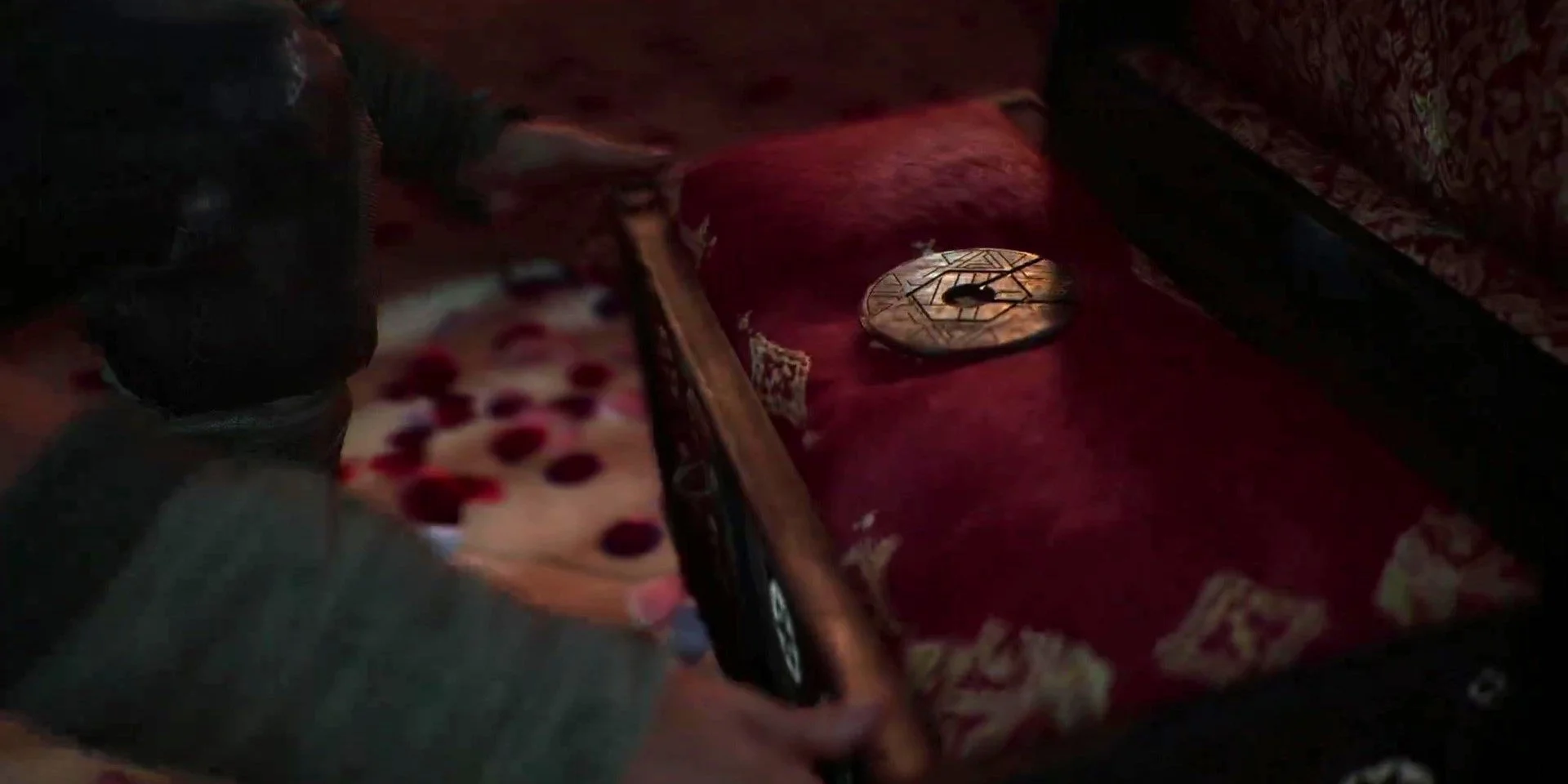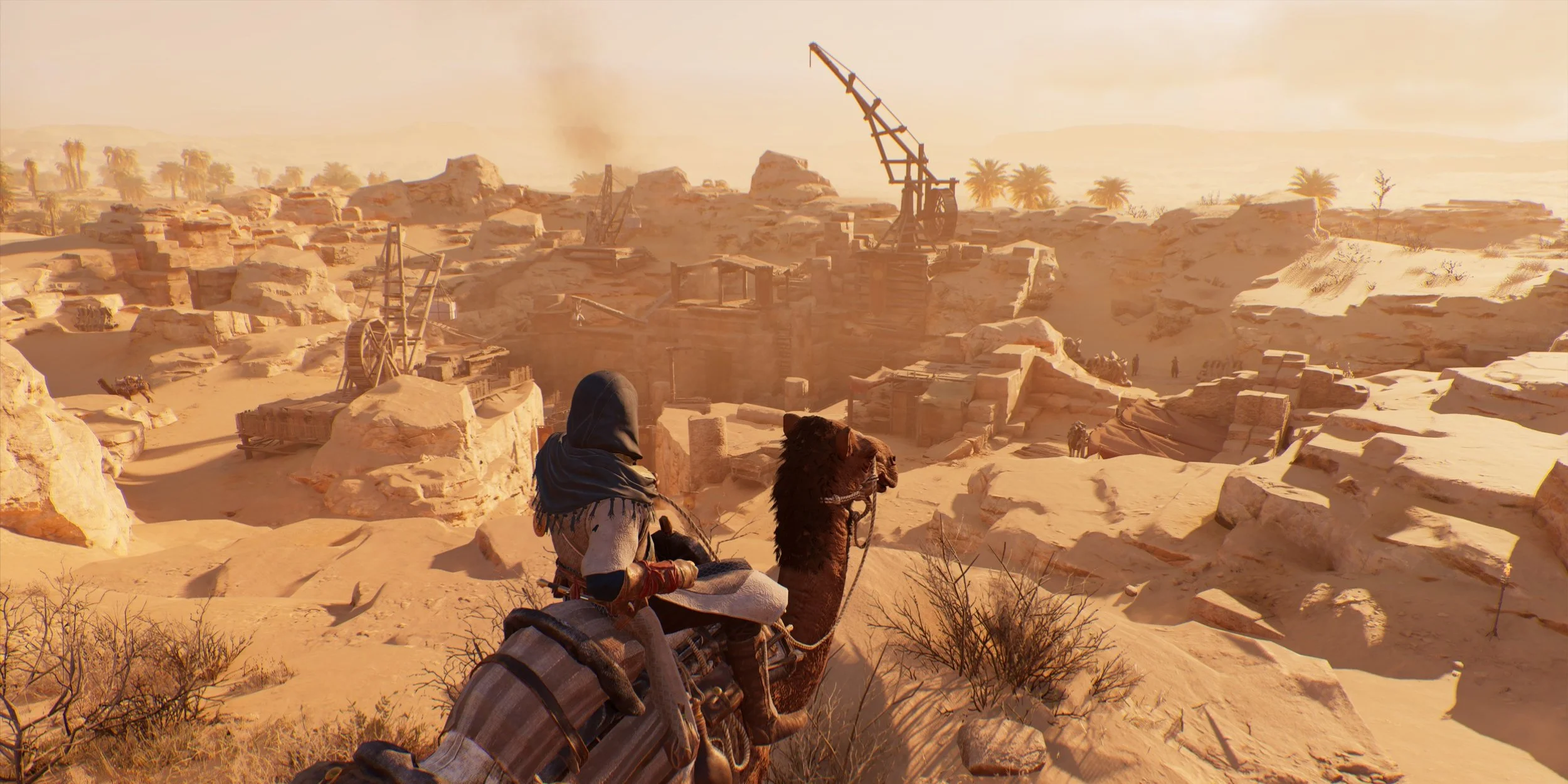The Currency of the Past: Assassin’s Creed, Ancient Artifacts, and Looting
The currency of the past is a messy topic and one that continues to be a problem today. Many of the Assassin’s Creed games throughout the franchise emphasize this point, but the newest game, Mirage, does a very good job at showing this very clearly and in a way that is still relevant today.
Beware Story Spoilers for Assassin’s Creed: Mirage
Looting is at least casually referred to as the second oldest profession, and humans have been taken from the dead from the earliest traces of civilization. Looting and Ancient Artifacts aren’t just their physical value, but the weight, power, and currency that the past has over the present is more than just the price of an object.
We see multiple examples of this throughout Assassin’s Creed: Mirage. In fact, one of Basim’s first missions involves infiltrating the palace to steal an Ancient Artifact that goes wrong very quickly. In the scene below, we can see how at the very, very least, the price of past artifacts is able to affect the present by funding a rebellion.
Basim and Dervis discuss the rebellion and the Artifacts that could be used to fund it in Assassin’s Creed Mirage.
This would be considered subsistence looting, which is where people find artifacts that have value to sell them to people in order to feed or sustain themselves in some form or fashion. This is the most common and hardest kind of looting to stop, as while it is a dangerous way to provide for yourself, it may also be one of the only ways to do so. Usually that takes place at the level of individuals, not groups.
However, in this case, it is funding a rebellion that Basim agrees with to a certain point and this is the case in the real world as well. Groups like ISIS in the past have sold off artifacts which make their way into European and American museums to fund their efforts as well, which creates a crisis when attempting to sort out which items are legitimate and which are stolen - on top of the moral debate about how this funds a group at which we were at war with at the time.
On the other side of things, there are those who are known as looter-collectors (or just collectors) who are knowingly or not often funding the subsistence looters in order to get what they want. This sort of passive collecting can be seen when Basim is asked to retrieve certain artifacts for various people throughout the game.
It is very similar to acts like those by Hobby Lobby in the massive smuggling scheme that was uncovered. In a Collectors model, museums, individuals, and corporations have all participated in the looting scheme even when they purchase items through seemingly legitimate channels, such as Sotheby’s.
Lastly, we see a much more telling and real - government-funded even - utilization of the past. In this case, it is not exactly looting, but the Order (the group that is quite often the enemy of the Assassins in the franchise and is often in or part of the government) is funding excavations throughout Baghdad to find Ancient Artifacts that they believe will give them more power. This culminates in the last hour or so of the game but is present throughout and even drives the main plot.
Skip This Section To Avoid Spoilers
-
Skip This Section To Avoid Spoilers -
A small piece of the end of Basim’s quest to explore the Ancient Temple below Alamut, where the Hidden Ones have been hiding. (There are spoilers without context).
The past is Basim’s driving force, from the beginning when he first steals and discovers the Ancient Disc the Order wants at the end of the tutorial missions, to the end when he discovers this whole collection of Discs that tell stories and are powerful enough that Basim is wary and awed by them. The past is presented as extremely powerful, and it is powerful enough that the Order has massacred many to get this far and that Basim has been lied to by the other Hidden Ones to prevent him from uncovering it.
End of Spoilers
-
End of Spoilers -
This demonstrates how much power the past has in real life too. Archaeology has been and was used in very similar manners throughout history to give credence to a present regime or nation and to increase the power they had. The Nazis often engaged in Pseudoarchaeology to pursue this, and if the Indiana Jones films get nothing else right, there was a very real push by Nazi groups to find these powerful artifacts to increase their power.
Psuedoarchaeology (n.) - A broad spectrum of largely unconnected topics and approaches which misapply, misinterpret, and misrepresent archaeological material in a non‐scientific and often speculative way. (Oxford Reference Entry)
The currency of the past in this case is used to affect the present greatly, and while they are the most famous example, other very legitimate groups have done this as well. People leverage the past for the present all the time - for good and bad - and this is often used for all kinds of propaganda: political, religious, personal, etc. None of it is inherently bad, but as history has shown it can be very powerful regardless and deadly in the wrong hands.
In the case of Assassin’s Creed: Mirage, Basim’s encounters with the Order show that this results in slavery, executions, and bloodshed due to the Order’s relentless pursuit of these artifacts. The past is shown to be a currency to buy money, power, authority, and even trust from the people. It is a great example of a very fictional game set in a (mostly) real past, showcasing real-world problems extraordinarily well as it too leverages the past to sell a very beautiful game to you.
That’s all for this week, Cryptids. Check back next week to find out a bit more about Psuedoarchaeology. In the meantime, tell me if you have heard about Psuedoarchaeology before and what you think it is.




